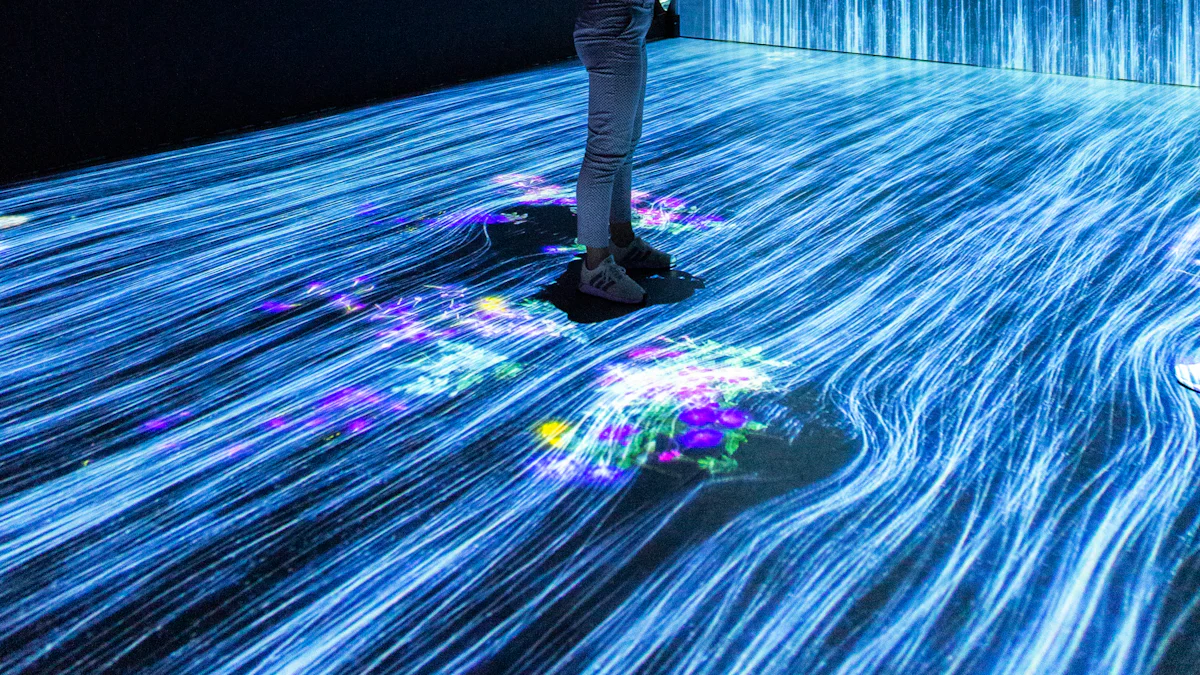
Stable Diffusion models, known for their prowess in creating photorealistic images (opens new window) from text and image prompts, have become indispensable in the realm of AI and image generation. Professionals, researchers, and organizations across diverse industries are drawn to the magic that Stable Diffusion offers (opens new window). From advancing research methodologies to optimizing marketing strategies, the applications are vast. In this blog, we delve into the nuances of Stable Diffusion models, exploring their significance and impact on AI innovation.
# What is Stable Diffusion
In the realm of AI, Stable Diffusion models stand out as powerful tools for understanding financial data and predicting market behavior. According to AI Experts (opens new window), these models offer a unique approach (opens new window) to analyzing complex datasets and extracting valuable insights. By selecting the appropriate Stable Diffusion model and considering factors like data characteristics and computational resources, researchers can gain a deeper understanding of financial markets.
AI Experts further emphasize that Stable Diffusion AI attracts a diverse user base (opens new window) comprising professionals, researchers, and organizations from various industries. Academics leverage these models to explore information diffusion dynamics and develop innovative methodologies. Simultaneously, businesses harness the technology to decipher consumer behavior patterns and enhance their marketing strategies.
Understanding the core principles behind Stable Diffusion models is crucial for unlocking their full potential in image generation tasks. These models offer a sophisticated framework for creating photorealistic images from textual prompts, revolutionizing the field of AI-generated content.
# Structure and Functionality
# Structure of Stable Diffusion
Stable Diffusion models consist of intricate components and a well-defined architecture. The components within these models work synergistically to ensure seamless operations. Each part, from the encoder (opens new window) to the decoder, plays a crucial role in transforming input data into high-quality images. Understanding the architecture of Stable Diffusion is essential for optimizing performance and achieving desirable outcomes.
# Components and architecture
Encoder: Responsible for encoding input information into a latent space representation.
Diffusion Module: Utilizes diffusion processes to generate realistic images progressively.
Decoder: Decodes latent representations to produce final photorealistic outputs.
# How each part contributes to the whole
The encoder sets the foundation by capturing essential features from input data.
The diffusion module refines these features through iterative processes, enhancing image quality.
The decoder translates refined features back into visual representations, ensuring coherence and realism in the generated images.
# Stable Diffusion Work
Operating with Stable Diffusion involves various tasks, including training models and fine-tuning them for specific purposes. Professionals in AI leverage these models for diverse applications, ranging from artistic creations to scientific simulations. Exploring real-world examples and case studies sheds light on the practical implications of utilizing Stable Diffusion in different contexts.
# Training and fine-tuning models
Training: Involves feeding data into the model iteratively to enhance its predictive capabilities.
Fine-tuning: Adjusting model parameters to specialize its performance for specific tasks.
# Practical examples and case studies
Artistic Creations: Generating lifelike portraits using custom Stable Diffusion models.
Scientific Simulations: Simulating complex phenomena through powerful stable diffusion models.
# Stable Diffusion Web
The web interface of Stable Diffusion offers a user-friendly platform for running custom models efficiently. Navigating this interface effectively can streamline image generation processes, making it accessible even to beginners in AI artistry.
# Setting up and using the web interface
Installation: Installing necessary dependencies like Python & Git for seamless operation.
Configuration: Configuring settings based on project requirements for optimal results.
# Tips for efficient usage
Resource Management: Allocating sufficient resources for running custom Stable Diffusion models effectively.
Regular Updates: Keeping software components up-to-date ensures compatibility with the latest advancements in AI technology.
# Applications and Mastery
# Applications of Stable Diffusion
# Real-world use cases
Medical Imaging Enhancement (opens new window): Utilizing Stable Diffusion models to enhance medical imaging for accurate diagnostics and treatment planning.
Fashion Industry Revolution: Implementing Stable Diffusion in the fashion sector to generate virtual clothing designs and predict trends efficiently.
Architectural Visualization (opens new window): Transforming architectural blueprints into photorealistic 3D renderings using advanced Stable Diffusion techniques.
# Impact on various industries
The impact of Stable Diffusion models transcends industry boundaries, revolutionizing diverse sectors with its image generation capabilities (opens new window).
In healthcare, these models streamline diagnostic processes by producing high-quality medical images from textual descriptions, aiding in precise disease identification.
The entertainment industry benefits from Stable Diffusion's ability to create lifelike characters and immersive virtual environments, enhancing user experiences in gaming and animation.
Educational institutions leverage Stable Diffusion for interactive learning materials, fostering engagement and comprehension among students through visually stimulating content.
# Mastering Stable Diffusion
# Steps to become proficient
Understanding Model Architecture: Delve into the intricate components of Stable Diffusion to grasp how each element contributes to image generation.
Practical Implementation: Experiment with custom models and datasets to gain hands-on experience in training Stable Diffusion for specific tasks.
# Resources and tools for learning
Explore online tutorials and documentation provided by the CompVis Group (opens new window) to deepen your understanding of Stable Diffusion methodologies.
Engage with the AI community through forums and workshops dedicated to discussing advancements in mastering Stable Diffusion models effectively.
In summary, the exploration of Stable Diffusion models (opens new window) has unveiled a realm of possibilities in AI image generation. The intricate components and architecture of these models play a pivotal role in transforming input data into high-quality images. The significance of Stable Diffusion is evident in its applications across various industries, from medical imaging enhancement to architectural visualization. Looking ahead, mastering Stable Diffusion work is key to unlocking its full potential and staying at the forefront of AI innovation.